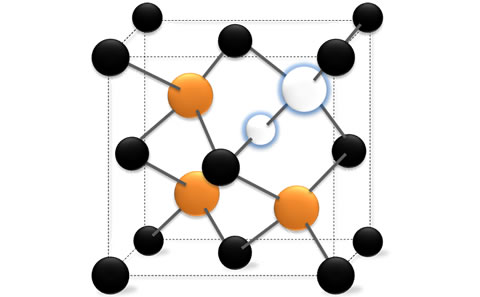Research interests
The Quantum nanoPhotonics group works on the development of optical quantum technologies, including light matter interaction in silicon carbide, photonic networks for quantum simulation based on single photons and generation and manipulation of non-classical light on chip for continuous variable quantum optics.
Integrated quantum photonics

Optics will play a major role in new technologies based on the manipulation of quantum mechanical states. To exploit the full potentials of these quantum states of light, an integrated approach is needed. We demonstrated (with collaborators that include Bristol, Twente, Milan, Macquarie and Jena University) different platforms that can be used for Quantum Optics applications. We are continuing this research to develop integration of all the components required for quantum technologies in a single chip. This will include sources of quantum states of light, optical networks to manipulate these states and detection.
Cavity mediated light-matter interaction

Photons are superb qubits as they do not interact much with the environment, meaning that the quantum information encoded into them can be preserved for a long time. This also means that having the photons to interact with each other is a challenging task. An approach to obtain interaction between photons is based on the use of non-linear materials. To observe non-linear responses at ultra-low intensities (as it can be in the case of the use of single photons) we cannot use conventional techniques and materials. However, the interaction between light and matter can be enhanced using optical cavities to trap photons in a small volume together with “artificial atoms”. Our research includes the design, fabrication and characterization of nanoscopic cavities for quantum optics applications.
Single photon emitters

Creation of single quanta of light, photons, in a controllable way is one of the most important and challenging tasks in photonic quantum technologies. The commonly used approach to create single photons is based on spontaneous processes in non-linear materials (parametric down-conversion or four wave mixing). Even if this method is suitable for proof of principle demonstrations, it is not easily scalable to create a large number of photons. An alternative approach is based on isolated emitters, like atoms, that naturally act as single photon sources. We study an integrated version of such emitters, based on defects in semiconductors. The defects trap electrons in their vicinity to form energy levels similar to those of molecules in free space. We can use the transition between the energy levels to produce single photons in a scalable way.
Video summary for the EU project QUCHIP
Video interview with University of Southampton QnP Laboratory leader, Dr Alberto Politi, and PhD student, Robert Cernansky on the EU collaboration QUCHIP http://www.quchip.eu/